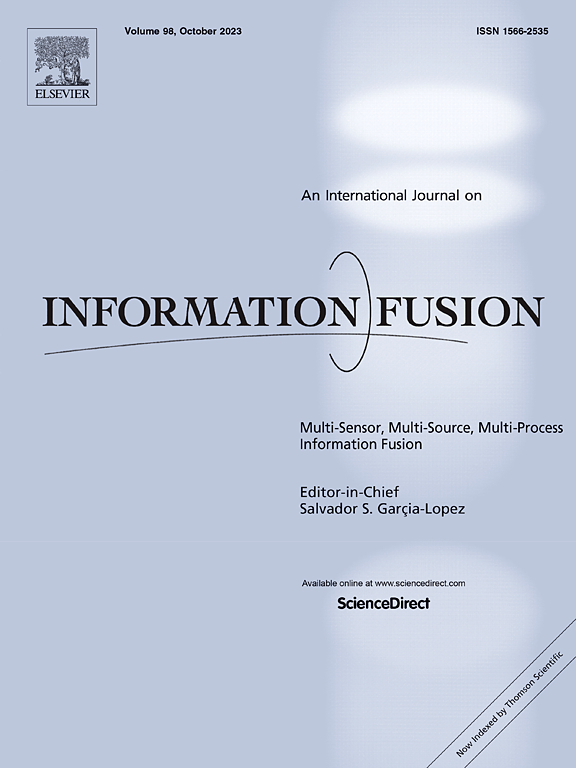PEAFusion: Parameter-efficient Adaptation for RGB-Thermal fusion-based semantic segmentation
IF 14.7
1区 计算机科学
Q1 COMPUTER SCIENCE, ARTIFICIAL INTELLIGENCE
引用次数: 0
Abstract
RGB-Thermal (RGB-T) semantic segmentation has attracted great attention in the research community of autonomous driving. Full fine-tuning pre-trained networks is a common strategy in RGB-T semantic segmentation. However, as model size grows, updating all parameters becomes expensive and impractical, which hinders the wide applications of pre-trained networks despite their effectiveness. To efficiently adapt pre-trained single-modality networks to the multi-modal RGB-T task, we design a module named multi-view adapter-pair. The multi-view adapter-pair bridges the gap between pre-trained features and the features required for RGB-T semantic segmentation. It achieves this by approximating high-dimensional updates to the hidden state during full fine-tuning within low-dimensional spaces. Moreover, we propose cross-modal self-attention, constructed using the self-attention operations in pre-trained transformer models. The cross-modal self-attention is designed to fuse RGB and thermal data by expanding the self-attention mechanism in the pre-trained model from a single modality to multiple modalities. Due to the permutation invariance of the attention mechanism and the differences between the two modalities, we introduce modality bias to guide the attention mechanism in learning dependencies inter- and intra-the two modalities. Leveraging these innovations, our network outperforms state-of-the-art methods on the MFNet dataset, as well as the FMB dataset and PST900 dataset, while maintaining parameter efficiency.
求助全文
约1分钟内获得全文
求助全文
来源期刊

Information Fusion
工程技术-计算机:理论方法
CiteScore
33.20
自引率
4.30%
发文量
161
审稿时长
7.9 months
期刊介绍:
Information Fusion serves as a central platform for showcasing advancements in multi-sensor, multi-source, multi-process information fusion, fostering collaboration among diverse disciplines driving its progress. It is the leading outlet for sharing research and development in this field, focusing on architectures, algorithms, and applications. Papers dealing with fundamental theoretical analyses as well as those demonstrating their application to real-world problems will be welcome.
 求助内容:
求助内容: 应助结果提醒方式:
应助结果提醒方式:


